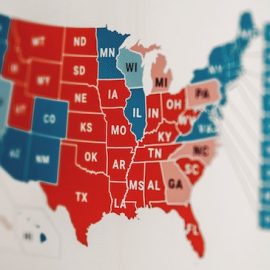

This article is an excerpt from the Shortform book guide to "The Shock Doctrine" by Naomi Klein. Shortform has the world's best summaries and analyses of books you should be reading.
Like this article? Sign up for a free trial here .
How did the Asian Tigers’ economies grow so fast? What development strategies did they employ to spearhead their economic growth? And why did their economies start to collapse in the 1990s?
Some economists attribute the growth of the Asian Tigers to unrestricted free markets. However, the Tigers owed their growth to heavy government intervention, and strict policies preventing foreigners from owning land or national firms. The trouble began when an unsubstantiated rumor spread that Thailand couldn’t sustain its currency, which triggered a chain of domino reactions that led to the near-collapse of the Asian Tigers’ economies.
In this article, we’ll take a look at what caused this economic collapse, and why the IMF discouraged other countries from helping Asia.
The “Asian Tigers”
In the late 1990s, financial trouble in Thailand quickly spread throughout the region and led to the near-collapse of many Asian economies. Milton Friedman and his followers (the proponents of free-market capitalism) saw this crisis as an opening that they could use to establish their policies.
These suffering countries had, just a year before, been held up on pedestals as prime examples of how globalization and free trade could produce enormous economic growth. Free market advocates called them the “Asian Tigers,” and they seemed to have a point: The Tigers’ economies were certainly growing at incredible rates.
However, their growth wasn’t due to unrestricted free markets. The Tigers had heavy government involvement in the economy, and strict policies that prevented foreigners from owning land or national firms. If anything, they were evidence that a mixed economy—with elements of both capitalism and socialism—was the key to rapid growth and stability.
The Asian Tigers Financial Crisis
The trouble began when an unsubstantiated rumor spread that Thailand didn’t have enough wealth to support its currency. In the newly globalized, electronic market, that alone was enough to trigger an economic disaster. Banks called in loans, which served to pop the quickly inflating housing bubble. Half-finished construction projects were abandoned all over the country, and the economy took a devastating hit.
Mutual fund brokers had previously presented the Asian countries as a single investment package. As a result, the crisis quickly spread beyond Thailand to Indonesia, the Philippines, Malaysia, and South Korea. Those countries had to empty their reserve banks just to sustain their currencies, which caused the unfounded rumor to become a reality: Now they really were going broke.
Naturally, as the economic situation in Asia worsened, investors were less willing to put money into those countries. Asian nations were caught in a cycle of fear that could only be stopped by a sudden, large influx of money.
However, the message from the financial establishment was clear: do not help Asia. In November 1997, at the Asia Pacific Economic Cooperation Summit, US president Bill Clinton made their position clear: The US Treasury wouldn’t be stepping in. The IMF was similarly reluctant—when it finally did respond, it wasn’t with a simple loan, but a list of now-familiar demands that would implement free-market economies in the affected countries.
The IMF’s “intervention” in Asia produced devastating results. At its worst point, Thailand was losing 2,000 jobs every day. In South Korea, 300,000 workers got fired per month. Indonesia’s unemployment rate climbed from 4 to 12 percent. In all, an estimated 24 million people lost their jobs.
In spite of the human costs of their policies, the IMF thought that things were going well, economically speaking. It had taken less than a year to implement economic shock therapy programs in Thailand, the Philippines, Indonesia, and South Korea. Now they were ready to reintroduce those countries to the global markets—which, they hoped, would immediately start buying up the newly available currencies, bonds, and stocks.
Instead, the exact opposite happened. Would-be investors reasoned that, if those countries had been in such dire straits that their economies had to be remade from the ground up, then Asia must be in much worse condition than they’d thought. Rather than rushing to take advantage of these new opportunities, investors pulled out even more of their money, further worsening the crisis.
While the people suffered, vulture capitalists were only too happy to pick over the remains. Major Wall Street firms moved in and started cheaply buying shares in major companies like Kia. Samsung, once an industry titan, was divided up and the pieces sold off for a fraction of their former value. Daewoo’s car division, once valued at $6 billion, was sold to General Motors for only $400 million.
The brutal economic crisis in Asia revealed how badly economic shock therapy could backfire: Not only did citizens of the “Asian Tigers” suffer terribly, but the investors whom the IMF hoped to attract wanted nothing to do with those countries.

———End of Preview———
Like what you just read? Read the rest of the world's best book summary and analysis of Naomi Klein's "The Shock Doctrine" at Shortform .
Here's what you'll find in our full The Shock Doctrine summary :
- A study of the history of economic shock therapy
- How economic shock therapy gave rise to the disaster capitalism complex
- How communities are beginning to recover from the destructive shock treatments






